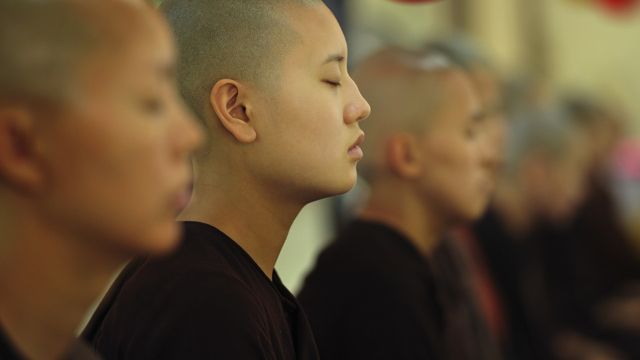
To practice Vipassana is to learn the principles applied to the process, and then plant your butt on a cushion and focus on the breath. No language allowed. Bear in mind that there is garbage in your head to deal with, and that sitting still and quietly is the way to clear it all out.
By Gerald “Strib” Stribling
Vipassana Meditation, or Insight Meditation, is Buddhism’s oldest form of meditation, practiced before the time of Buddha by the more ancient inhabitants of the Ganges Valley.
Most other forms of meditation are Samatha meditation aimed at developing concentration and promoting tranquility. Vipassana’s goal is insight in the form of systematically dismantling ones own delusions until you get perfect clarity of truth.
Focus, as in most other forms of meditation, is of great importance in the process of Vipassana, which is why it, as well as other forms of meditation, are so focused on the “breath.” That’s Buddhist shorthand for attending to everything that is going on in your body, from your itchy athlete’s foot to your world view, as the dhamma (Dharma) more and more greatly exercises its influence on your way of life.
I liken it to parenthood: who were you before the bundle of joy arrived, and who are you after?
You may need to trade in the Firebird for an SUV. Through your own understanding of the wisdom of Buddha, you can examine your whole life in fresh, new ways, eventually achieving perfect understanding, up to and including “the Void,” if you can practice this to its logical conclusion.
Instruction in Vipassana Meditation should be free (and if it isn’t I’d like to hear about it). It’s not necessary to take the 10-day intensive course in Vipassana. Find a Theravada temple in your community (Sri Lankan, Thai, Burmese, Cambodian) if you want a more leisurely pace. The best English speakers are frequently Sri Lankan.
I think that the goal of any meditation regimen is to seek insight, but along the way you have to learn Samatha before you can delve into the inner workings of what you perceive to be true, or not true. I can attest to the necessity to maintain a practice of this kind, because it assists people to cope with change. It is used a lot in prisons all over the world.
There should very little jibber-jabber going on in your head during this primarily non-language phenomenon.
People can read books and assume erroneously that Vipassana has concentrative components that has practitioners walking around like zombies saying the words in their heads, “I am picking up my right foot…I am moving my right foot forward…” I have read this myself, in published books.
It is nonsense on the face of it.
To practice Vipassana is to learn the principles applied to the process, and then plant your butt on a cushion and focus on the breath. No language allowed. Bear in mind that there is garbage in your head to deal with, and that sitting still and quietly is the way to clear it all out.
It’s the phenomenon of paradigm shift. In his book The Seven Habits of Highly Effective People, David Dwyer describes a circumstance that I think is a good example of paradigm shift through challenging what you believe is immutably true.
He recalls being visited by a man who was despondent that he didn’t love his wife anymore. David’s advice was to love her.
“But that’s the point,” he said, “I do not love her.”
“Then pretend you love her. Act like you love her.” And in a year, the man was in love with his wife again.
There is no reason why this intellectual overlay cannot go hand in hand with other forms of meditation, which may point the way to Vipassana to begin with. But there are distractions to some forms of meditation, such as chanting or koans or mantras, that can detract from the Insight experience.
Losing your delusions is painful; most people cling to them their whole lives.
Once your mind is open enough to question why you believe things are the way they are, the pain fades quickly enough, and that space is occupied by unvarnished reality. Destroying delusion is the way to see reality. If you don’t like what you see, well, the process isn’t reversible.
Any way you look at it, you’ve got to gut it out. The Noble Eightfold Path shows us how to do this.
Destroying delusion is the way to see reality. ~ Gerald Stribling Click To Tweet
Photo: Pixabay
Editor: Dana Gornall
Were you inspired by this post? You might also like:
Comments
- Not Sure How to Help Those Who are Down? Just Begin by Showing Up. - December 20, 2018
- Do Buddhists Believe in God? - August 25, 2018
- What is Insight (Vipassana) Meditation? - July 18, 2018




